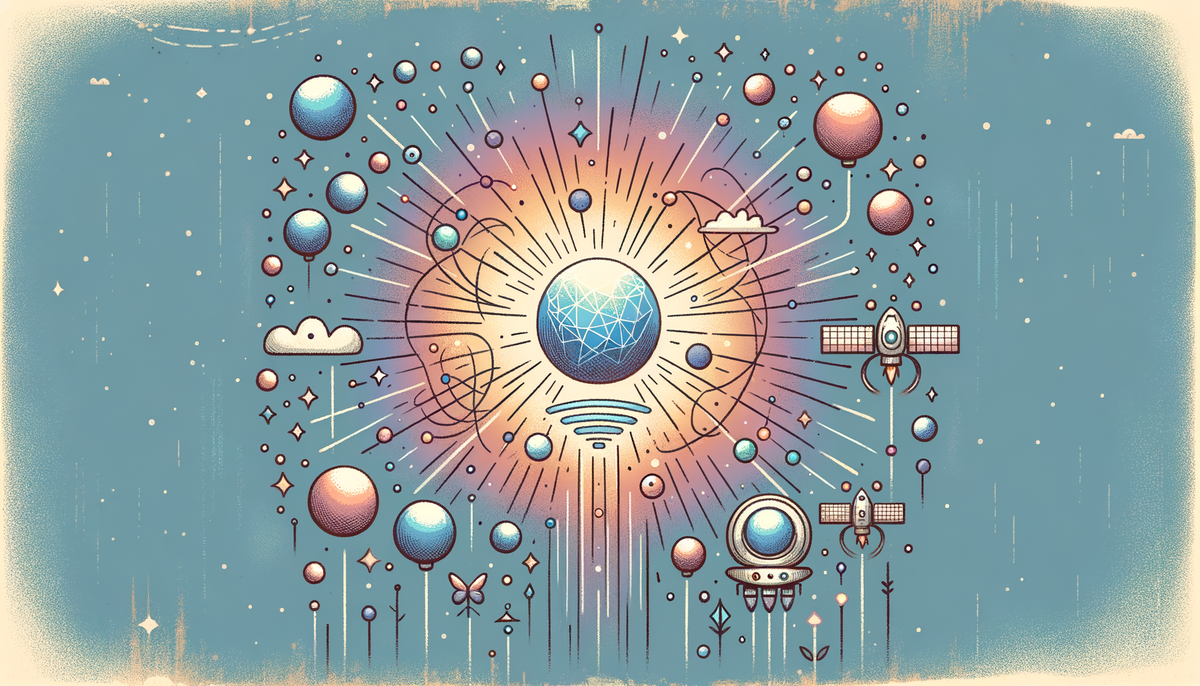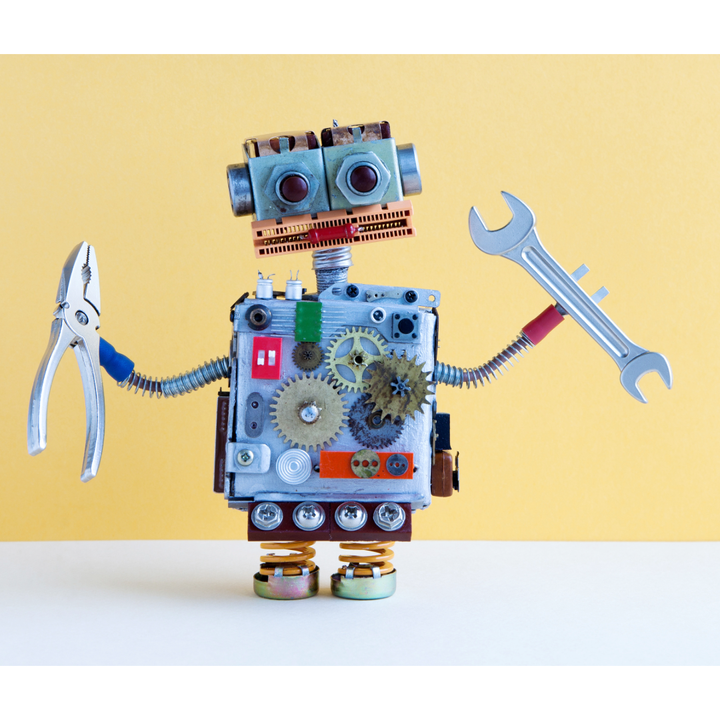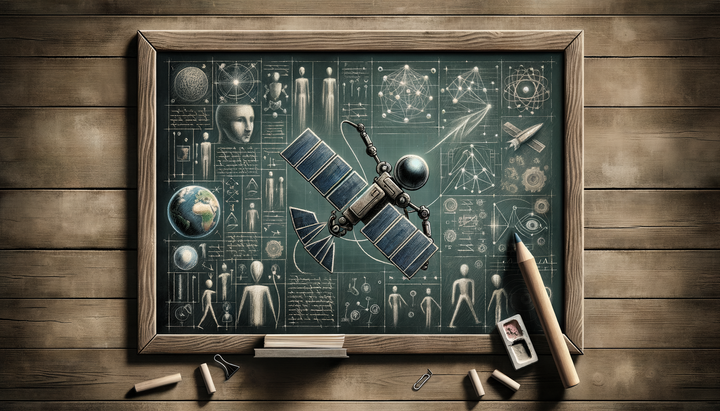AI Updates: The Mysterious Power of AI and its Impact on Society

This article delves into the multi-dimensional landscape of artificial intelligence as it expands into everyday applications, groundbreaking scientific advancements, the fight against misinformation, evolving healthcare challenges, and creative as well as infrastructural revolutions. From the subtle yet transformative use cases of Google’s Gemini in common tasks, through Demis Hassabis’s paradigm-shifting journey at DeepMind, to the controversies surrounding AI-driven disinformation and creative imitations of Studio Ghibli’s enchanting art, we explore how AI is reshaping our world. We also examine the integration of AI chatbots in social platforms and Apple’s colossal investment in Nvidia server infrastructure, underscoring the blend of innovation and caution that defines modern AI developments.
Everyday AI: The Subtle Revolution of Gemini
In a world awash with flashy advertisements for high-tech innovations, the understated charm of AI often emerges in the mundane. The recent insights into Google’s Gemini illustrate a quietly potent revolution where artificial intelligence is applied to everyday tasks. An engaging account from 9to5Google described how, in a grocery store setting, a simple photo of a receipt transformed into a dynamic data point via Gemini, eliminating the need for tedious manual counting. This example vividly portrays how AI’s true value is not in grandiose displays but in improving day-to-day efficiency.
The narrative emphasizes that the perception of AI as just another app obscures its revolutionary potential. Instead of expecting the high drama found in science fiction, the power of AI should be celebrated in how it eases otherwise burdensome, repetitive tasks. This kind of enhancement promotes a subtle shift—a transformation of daily routines into seamless, efficient processes. It is a paradigm where even the most trivial interactions with technology hold the promise of reinvigorated productivity and user satisfaction.
There is a crucial analogy worth mentioning: AI as an intimate personal assistant. Like a trusted aide who knows your schedule and takes care of small errands, AI is evolving from a robotic toolkit to a nuanced helper capable of learning and adapting. This evolution can be seen in the context of AI innovations highlighted on our own Google Gemini: A New Era in Generative AI post and our deep dive in New Challenges and Innovations: A Deep Dive into AI Trends. In these articles, we see more evidence that the task of demystifying AI and unlocking its pragmatic uses is well underway.
This transformative approach is both inspiring and indicative of broader trends in AI adoption. As projected by many technologists, the journey towards AI’s ubiquitous integration into everyday life will rely on bridging the gap between technological potential and practical implementation. By aligning AI’s capabilities with concrete real-world applications, developers and businesses can ensure that artificial intelligence remains accessible, useful, and most importantly, human-centered.
From Chess Prodigy to AI Visionary: The Demis Hassabis Story
The journey of Demis Hassabis, which began on the chessboard and evolved into a transformative force in artificial intelligence, epitomizes the fusion of human intellect and machine learning. As detailed in a recent account by Entrepreneur, Hassabis’s early exposure to chess ignited an enduring interest in cognitive processes and computational strategies. His early programming experiments on an Amiga 500 laid the foundation for what would eventually become DeepMind.
Under Hassabis’s leadership, DeepMind advanced the boundaries of AI, notably with AlphaZero—a system that mastered chess through self-play in a mere four hours. This breakthrough not only reshaped competitive benchmarks in chess but also underscored the broader implications of self-learning algorithms.
The implications of his work extend far beyond games. In 2024, Hassabis, alongside his colleague John Jumper, received the Nobel Prize in Chemistry for their work on AlphaFold2. The breakthrough in predicting protein structures heralds a new era in biomedical research. Imagine the possibilities: what once took years can now be achieved in a fraction of the time, radically accelerating drug discovery and our understanding of diseases. His journey is a poignant reminder of how childhood passions can culminate in revolutionary developments.
In reflecting on Hassabis’s story, it is essential to appreciate the intersections between human brilliance and machine efficiency. As one might recall the sage words famously quoted by John McCarthy, "Artificial intelligence is the science of making machines do things that would require intelligence if done by men." Hassabis’s lifelong pursuit embodies this very idea, as he demonstrates that the intricate dance between human intuition and artificial prowess can lead to unparalleled innovations.
For those interested in the historical evolution and current applications of AI, our detailed coverage on New Challenges and Innovations: A Deep Dive into AI Trends provides further context on how such breakthrough innovations serve as a catalyst for the broader AI revolution in the tech landscape.
Countering Disinformation: AI, Propaganda, and the Battle for Truth
The advent of large language models (LLMs) has brought with it not only new opportunities but also complex challenges—chief among them being the propagation of disinformation. Recent research has spotlighted the evolving tactics of malign actors leveraging AI to embed false narratives across digital platforms. As reported by the Bulletin of the Atomic Scientists, Russian networks have been deploying what has been termed "LLM grooming," essentially a coordinated effort to flood online spaces with propaganda that can insidiously infiltrate AI training datasets.
This phenomenon is not just a technological issue—it is a threat to the integrity of digital discourse and democratic processes. The strategy of integrating biased content into AI training material creates a self-reinforcing loop, potentially leading to an "ouroboros" effect where misinformation continuously circulates through automated systems.
If left unchecked, this trend could erode public trust in AI systems and challenge the very foundation of information reliability. Tackling such challenges requires concerted efforts from both technologists and policymakers. Implementing rigorous data hygiene standards, as well as establishing transparent policies for AI training, are crucial first steps. Moreover, collaborative efforts, such as cross-sector partnerships between governments, technology companies, and independent researchers, are essential to build safeguards and bolster information literacy.
Several European nations, like Estonia and Finland, have already made strides in combating misinformation through proactive educational initiatives. Their example demonstrates that public awareness and digital literacy can shield communities from the corroding effects of such propaganda. These measures not only counter disinformation but also highlight the dual-use nature of AI technology: while it stands to revolutionize numerous facets of life, it equally demands vigilance to prevent its misuse.
For further insights on AI’s challenges and the need for innovative governance, our post on New Challenges and Innovations: A Deep Dive into AI Trends offers a comprehensive overview of the ongoing battles between technological advancement and ethical constraints.
Healthcare Transformation: Bridging Innovations and Practitioner Concerns
The integration of AI in healthcare holds transformative promise, yet recent studies reveal a cautious sentiment among medical professionals. A report in Medical Xpress pointed out that many healthcare practitioners feel that the introduction of AI tools—aimed at streamlining diagnostics, patient triage, and data management—can sometimes translate into increased administrative burdens rather than the intended reduction of workload.
This sentiment stems from a concern that adding layers of automation may complicate workflows instead of simplifying them. While AI exhibits remarkable potential in enhancing diagnostic accuracy and operational efficiency, the perceived risk of disrupting the delicate human touch in healthcare persists. The challenge lies in designing AI systems that align with the practical needs of medical professionals while integrating seamlessly into their daily routines.
Real-world examples suggest that involving practitioners in the design and execution phases of AI implementation is critical. When doctors and nurses have the opportunity to provide feedback and suggest improvements, the resulting systems are far more likely to alleviate burdens rather than add inefficiencies. This collaborative approach creates a symbiotic relationship between human expertise and machine efficiency.
Moreover, it is important to consider that technology in healthcare must preserve the deeply human aspects of patient care. No algorithm can replicate the empathy and nuanced judgment that comes from years of medical practice. In this light, AI should be viewed as a tool that augments the capabilities of healthcare providers—not as a replacement for human interaction.
Healthcare organizations globally face the task of fostering a cultural shift towards the acceptance of AI. Public seminars, workshops, and continuous education about the benefits of AI can help dismantle misconceptions and promote a more open-minded adoption of technology. Through such integrative strategies, combined with thoughtful design and clear communication, AI can be harnessed to deliver improved patient outcomes while reducing burnout and administrative overload.
AI Artistry and the Studio Ghibli Phenomenon
Visual creativity has always been a domain where technology and art meet, yet it is also an arena rife with complex debates regarding originality and authenticity. The recent surge of Studio Ghibli-style images generated by OpenAI’s cutting-edge image generator integrated into GPT-4o has ignited a vibrant conversation. Social media has become a festival of whimsical visuals that conjure the magic of beloved animated classics like “Spirited Away” and “My Neighbor Totoro.”
In a striking display of humor and self-awareness, OpenAI CEO Sam Altman shared playful images of himself re-envisioned as a youthful, Ghibli-esque character. The juxtaposition of advanced AI technology with traditional animation styles underscores both the creative potential and the inherent challenges in merging old and new. Yet, not everyone embraces this collaboration between AI and artistic expression.
Hayao Miyazaki, a figure synonymous with the soul of Studio Ghibli, has been openly critical, denouncing the application of AI in the realm of art as an affront to creative integrity. More than 400 filmmakers and creatives have voiced their concerns regarding unauthorized AI training on their work, fearing that this trend might undermine the value of human-made art.
"Artificial intelligence is the science of making machines do things that would require intelligence if done by men." – John McCarthy
This quote encapsulates the tension between technology’s potential and the authentic human creative process. While AI-generated art can serve as an inspirational tool and democratize creative expression, it also challenges traditional norms and ownership rights in the art world.
From a broader perspective, the development echoes our ongoing coverage on sites like Exploring Ghibli: The Intersection of AI and Artistry and ChatGPT's New Image-Generation Tool: Progress and Controversy, which highlight the multifaceted impact of AI in creative fields. These developments remind us that while AI can magnify creative capabilities, a balanced approach is essential to preserving the authenticity that defines artistic endeavors.
The debate surrounding AI-generated art is a microcosm of a larger conversation about technology’s role in society. It forces us to ask whether embracing AI in creative industries will lead to a richer tapestry of art or if it might ultimately dilute the originality and soul that have defined human creativity for generations. The answer, as with many AI deployments, will likely lie in finding the right balance between innovation and tradition.
AI in Social Communication: The Case of Grok and Telegram
As communication patterns evolve rapidly with the digital age, artificial intelligence is increasingly taking center stage in how information is exchanged online. X Corporation’s recent integration of its Grok AI chatbot with Telegram is an illustrative example of this trend. The integration promises a seamless blend between social media and instant messaging, thereby enhancing user engagement by situating AI-powered assistance where many already spend their time—within their messaging apps.
Described as having a “non-woke” persona and a distinct character, Grok is set to challenge traditional AI norms by providing a robust, interactive experience across platforms. The strategy behind tapping into Telegram’s expansive global user base, particularly among niche communities, reflects a broader trend: the blending of AI with everyday communication to promote convenience and personalized interaction.
Moreover, this collaboration signals a significant investment in AI infrastructure. With X Corporation having already secured massive Series C funding and boasting an enormous data center equipped with top-tier Nvidia H100 units, the foundation is being laid for AI-driven functionalities that extend far beyond casual conversation. However, challenges remain, particularly around engagement metrics, data security, and potential ideological imprints that might arise from platform-specific AI adaptations.
By integrating AI chatbots directly into popular messaging platforms, companies aim to enhance user experience in a way that is both direct and innovative. This strategy is reminiscent of earlier phases in AI’s evolution, where novelty and practicality often walked hand in hand. Yet it also requires careful monitoring and continuous improvement to ensure that such integrations empower rather than alienate users.
Apple’s Bold Leap into Generative AI with Nvidia Servers
Apple has long been synonymous with sleek design and intuitive user experiences. However, when it comes to artificial intelligence, the company has often maintained a cautious stance—until now. Recent reports from Yahoo Finance have revealed that Apple is considering a staggering $1 billion order for Nvidia’s latest server technology. This strategic move marks a significant departure from Apple’s historical reluctance to invest in large server infrastructures, hinting at a newfound emphasis on generative AI capabilities.
Traditionally, companies like Google and Amazon have dominated the sphere of large-scale AI processing with vast arrays of servers designed specifically for complex machine learning tasks. Apple’s rumored procurement of approximately 250 servers, each equipped with advanced Nvidia technology, represents a bold pivot. The integration of these next-generation systems into their operations is anticipated to power sophisticated AI models that could eventually transform capabilities across the Apple ecosystem, from Siri enhancements to more intelligent and adaptive applications.
This shift is not just about hardware—it is emblematic of a broader strategic recalibration aimed at repositioning Apple in the competitive landscape of generative AI. The company's earlier hesitations, particularly around generative AI upgrades for Siri, have now given way to a renewed investment in next-level technologies. Analysts suggest that this pivot could significantly alter how Apple products interact with users, merging the intuitive design that Apple is known for with the deep computational power of advanced AI.
While this grand investment has ignited heated discussions among experts, it is a clear signal that even companies grounded in tradition recognize the transformative potential of AI. As hardware and software converge in the development of more advanced systems, we may well be on the cusp of witnessing a dramatic transformation in user experiences across industries.
Embracing the AI Future: Balancing Innovation and Caution
The sprawling panorama of artificial intelligence, as observed through these various lenses—from everyday assistance to revolutionary scientific breakthroughs—illustrates that the future is as promising as it is complex. The transformation driven by AI is not merely about achieving technical feats; it is an ongoing journey that must balance innovation with thoughtful consideration of long-term societal implications.
On one hand, AI is unlocking new avenues of efficiency and creativity, as seen in the mundane improvement of everyday tasks and the groundbreaking innovations in fields like molecular biology and healthcare. On the other, the challenges posed by disinformation, the potential misalignment with creative pursuits, and the technological disruptions in traditional sectors serve as cautionary tales. These case studies highlight the essentiality of responsible AI deployment—where technical advancements are harmonized with regulatory oversight and social trust.
Industries across the board—from retail and healthcare to creative arts and social media—are rethinking the role of AI. Such a transformation necessitates not just technological enthusiasm but also a commitment to ethical frameworks and concerted public education. As policymakers and industry experts deliberate on these issues, the core focus must remain on forwarding a vision for AI that respects human ingenuity while propelling us toward a more efficient, informed, and interconnected future.
In reflecting on the myriad aspects of AI covered in this discussion, I am reminded of our broader analyses that contextualize these individual innovations within the grander narrative of technological transformation. For enthusiasts, professionals, and everyday users alike, the onus is on us all to embrace AI’s expansive potential with both excitement and critical discernment.
Further Readings
For a deeper dive into these topics, you may wish to explore these related articles from our AI.Biz website:
- Exploring Ghibli: The Intersection of AI and Artistry
- ChatGPT's New Image-Generation Tool: Progress and Controversy
- Google Gemini: A New Era in Generative AI
- New Challenges and Innovations: A Deep Dive into AI Trends
These readings offer additional perspectives on the rapid evolution of AI, demonstrating how everyday applications, groundbreaking research, and ethical challenges all contribute to a rich and multifaceted conversation on the future of technology.



Comments ()